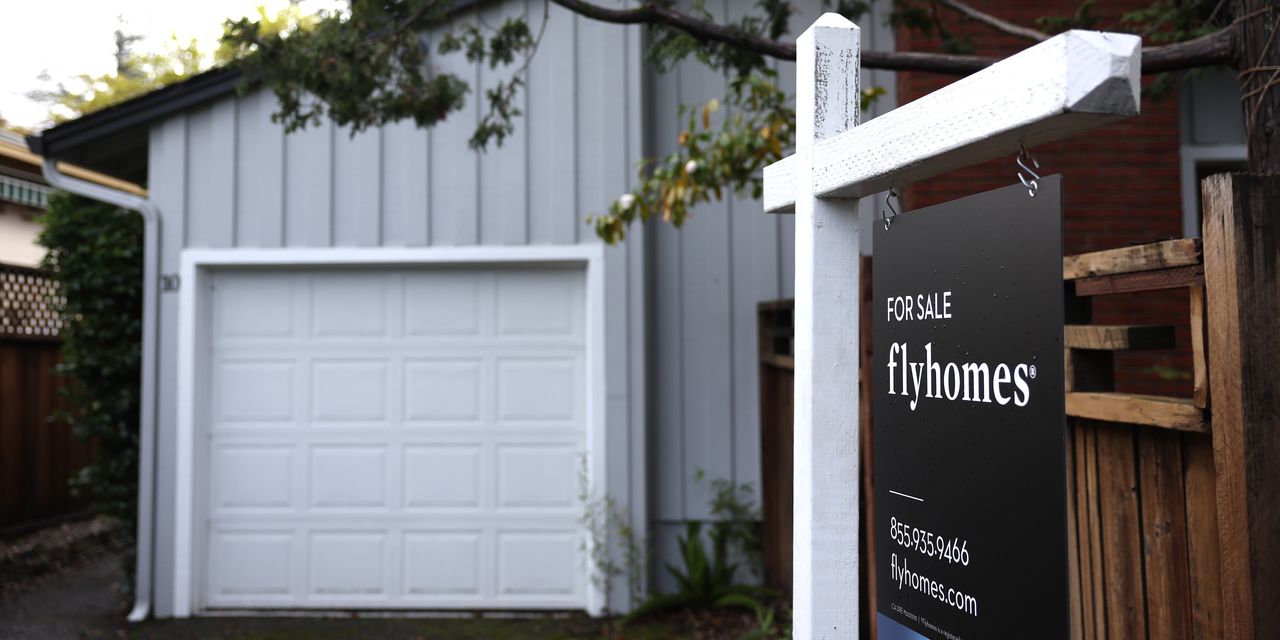The housing market slumped in the first half. It could take big changes to get it moving again.
The seasonally adjusted annual rate of existing-home sales sunk in June to 4.16 million, the National Association of Realtors said Thursday. It was a sharper decline than analysts had forecast and the lowest level since sales bottomed at 4 million in January.
“The first half of the year was a downer for sure,” Lawrnece Yun, the trade group’s chief economist, said in a statement. Sales in the first half were 23% lower than in 2022, he added.
The slowing sales are the latest sign that a combination of soaring home costs, sharply higher mortgage costs, and too little inventory has pushed young home buyers to the sidelines. The rental market—with its cooling costs and surplus of multifamily units—could look more attractive to them for a while.
First-time buyers comprised just 27% of all existing-home purchases in June, the trade group said. A more typical share is around 40%, Yun said on a call with reporters. “First-time buyers, younger adults, are really struggling to get into the market,” he said. The age of the typical first-time buyer reached an all-time high of 36 in 2022, the Realtors association said last year.
The second half doesn’t look brighter.
Fannie Mae
and the Mortgage Bankers Association forecast existing-home sales will continue to slide.
House prices remain in the stratosphere despite the sales slowdown. Homes changed hands in June for a median $410,200, the highest price since last June’s all-time high of $413,800. Mortgage rates have been above 6% all year, with the average rate on a 30-year fixed-rate home loan at 6.78% as of Thursday, according to Freddie Mac. As recently as November 2021, mortgage rates were under 3%.
Higher rates have discouraged existing homeowners from trading up to bigger homes, keeping homes off the market. About one-third of homes in June were sold above list price, Yun said on a conference call—a sign of bidding wars over limited inventory. There were 1.08 million units on the market at the end of June, down 13.6% from a year ago. “The market can easily absorb a doubling of inventory,” the economist said.
All this is weighing on buyer sentiment. Of those surveyed by Fannie Mae in June, just 22% said it was a good time to buy a house. Buyers also could be deterred by the older housing stock, says Joel Kan, the mortgage bankers group’s deputy chief economist. “Because we haven’t built a lot of starter homes, and in general have been under-building for the last decade, the housing stock itself is aging,” Kan said. “From that perspective, it might not be a good time to buy because you’re going to be paying relatively more for a house that’s—especially if it’s not new construction—older, and maybe poorer quality.”
Builders have met some of the demand for homes, recent data show. New home sales jumped in May, census data show, while applications for purchase loans from builder-affiliated lenders increased 26.1% from year-ago levels in June, the Mortgage Bankers Association said Thursday. “With existing inventory still held back by homeowners, prospective buyers have turned to newly built homes instead,” Kan said in a statement.
New homes will continue to be a source of housing for those that can afford them—but it could take lower rates to unlock home listings more broadly. “The reason why there is so little inventory is that people are loving their 3% mortgage rate,” Yun said on the call. Should mortgage rates decline, “that pain of giving up that 3% becomes less severe,” Yun added.
Such a decline could take some time. The most recent forecast from Fannie Mae, a government-sponsored enterprise that buys mortgages in the secondary market, foresees rates remaining at or above 6% through the third quarter of 2024.
Another solution, according to Yun: more sales of single-family homes used as rentals. There are about 20 million single-family rentals owned by small so-called mom and pop investors, the economist estimates. The Realtors group has suggested legislation to members of Congress meant to temporarily reduce the capital-gains tax for real estate investors if they sell the house to a first-time or first-generation home buyer, Yun said. The legislation hasn’t yet passed.
Write to Shaina Mishkin at shaina.mishkin@dowjones.com
Read the full article here



 Casino Welcome Bonus
Casino Welcome Bonus